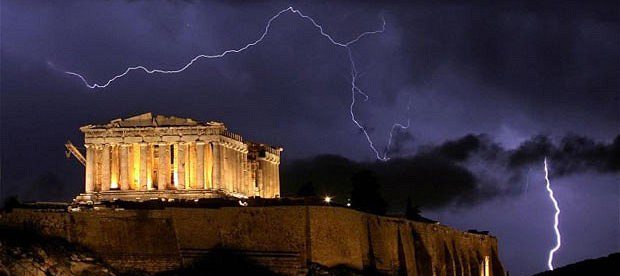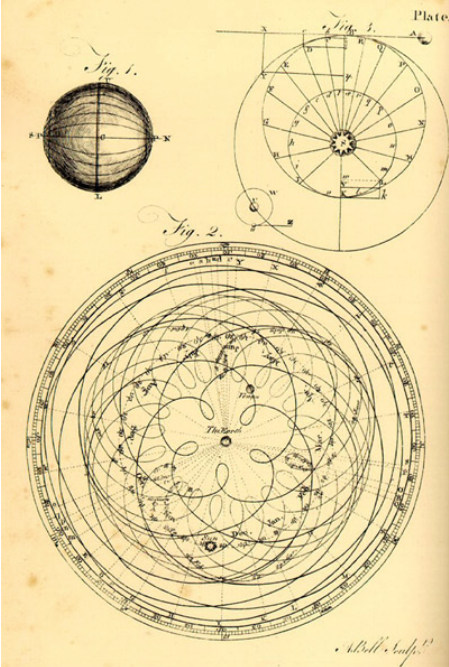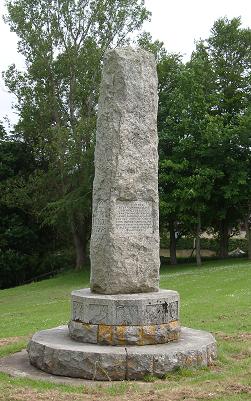James Ferguson (1710-1776) ~ Painter, Author & Astronomer
James Ferguson was born in Core of Mayen 11-miles East of Keith in the Parish of Rothiemay, in Banffshire, the son of a Peasant Farmer. It’s an interesting comment on the value that we in the North-east have placed on Education over the Centuries that his father living 300-yrs ago in an isolated Country Cottage in this part of Scotland could both Read & Write. James Ferguson was what is known as self-taught or, as he liked to say, ‘Taught by God’. He had negligible Formal Schooling but did receive informal instruction from some of the Local Educated men. Later he had guidance from his own friends, amongst whom was one of the 18thC’s most able Mathematicians, Colin Maclaurin, who had by then moved from Aberdeen to Edinburgh.
Autobiography: Life of James Ferguson FRS
His taste for Mechanics was about this time accidentally awakened on seeing his father making use of a Lever to raise a part of the Roof of his House – an Exhibition of strength which excited his wonder. In 1720 he was sent to a neighbouring Farm to keep Sheep, where he amused himself by making Models of Machines, and at night he studied the Stars. Afterwards, as a Servant with a Miller, and then with a Doctor, he met with hardships which rendered his constitution feeble through life. Being compelled by his health to return Home, he then amused himself with making a Clock having Wooden Wheels & a Whalebone Spring. When slightly recovered he showed this & some other Inventions to Sir James Dunbar of Durn, who Employed him to clean his Clocks, and to make his House his Home. He gave him some help to improve his knowledge of Mathematics & Drawing. It was while staying at Sir James’ House that he painted the 2-Gate Stones – one as a Terrestrial Globe and the other as a Celestial Map. He there began to draw patterns for Needlework, and his success in this Art led him to think of becoming a Painter. In 1734 he went to Edinburgh, where he began to make Portraits in Miniature, by which means, while engaged in his Scientific Studies, he supported himself and his Family for many years. After returning North to Inverness to find Work, an Astronomical Rotula that Ferguson had produced was sent to Professor Maclaurin in Edinburgh, who immediately recognised Ferguson’s ability and gave him Encouragement & Assistance.
Ferguson based himself in London for much of his Professional Life. He didn’t push forward the Boundaries of Astronomy in the 18thC but he did entice many people into taking a real interest in it. He was well known to all the Practitioners of the time in Britain, FRS, Author of Astronomical Textbooks, Designer of Astronomical Clocks that have never really been surpassed, a Public Lecturer whose reputation earned him a comfortable Living & a Pension from the King.
Ferguson’s self-taught Origin was an inspiration to others. A Book called the Story of the Peasant-boy Philosopher by Henry Mayhew. It is a piece of Fiction written about 150-yrs ago designed to inspire children to learn for themselves, based, “on the True Story” of James Ferguson’s childhood years.
In Ferguson’s time, Astronomy was mainly about the Solar System, about Eclipses, about Tides and about the Moon’s motion. Telescopes hadn’t the aperture for Deep Space work. Indeed it wasn’t until comparatively well on in Ferguson’s life that the Achromatic Objective was invented by John Dollond. Even by the end of his life, a 4-ins Aperture Refractor was pushing the limits of Glass Technology. Spectroscopy was nowhere to be seen. The ‘Fixed Stars’ seemed to carry little information. Nonetheless, Astronomy was evolving into a Technical Subject, technical enough to need a sympathetic expositor to keep the Public informed. Ferguson’s hot-selling Book Astronomy Explained was re-printed as the very long article on Astronomy in the 1st Edition of the Encyclopaedia Britannica.
The Diagram alongside shows how retrograde motion occurs naturally if you view the Heliocentric Orbits of Planets Geocentrically. He drew it by fitting Pasteboard over the Earth on his Mechanical Orrery and marking off the Directions of Venus & Mercury over a span of several simulated years.
Lecturing almost 150-years before Women were accepted into Universities in this Country, Ferguson was keen to make his instruction equally accessible to them. Like all his Books, The Young Gentleman & Lady’s Astronomy ran to many Editions. It covered Topics such as Size & Motion in the Solar System, Sidereal time, Solar time, Mean time and the Art of Dialling (i.e. making all sorts of Sundials), finding Latitude & Longitude, very topical subjects for the 18thC, the Moon’s motion, Tides & Eclipses and some even more Technical matters such as Scaling the Solar System from timing the Transit of Venus across the Face of the Sun. The Book was presented as a dialogue between Eudosia and her Brother. How many Ladies from the Social Classes will be discussing this Topic with Visitors when the Transit happens again – quite a few are likely.
The 4M high Monument to James Ferguson in the Parish of his birth, Rothiemay, seems to be little known outside the Locality. It was Sculpted by an Aberdeen Mason from local Granite and erected in 1907.
The Rubislaw Granite Monolith was Designed by Kelly & Nicol, Architects, of Aberdeen and features a carved Plinth showing the Signs of the Zodiac, and an Inscription Listing some of his early Friends & Benefactors. As the Inventor & Improver of Astronomical and other Scientific Apparatus, and as a striking instance of Self-education, he claims a place among the most remarkable Scottish Scientists.
During the Latter years of his Life, he received a Pension of £50 from the Privy Purse. He died in London on 17th November 1776 and was buried in St Marylebone Churchyard – now a Public Garden.





